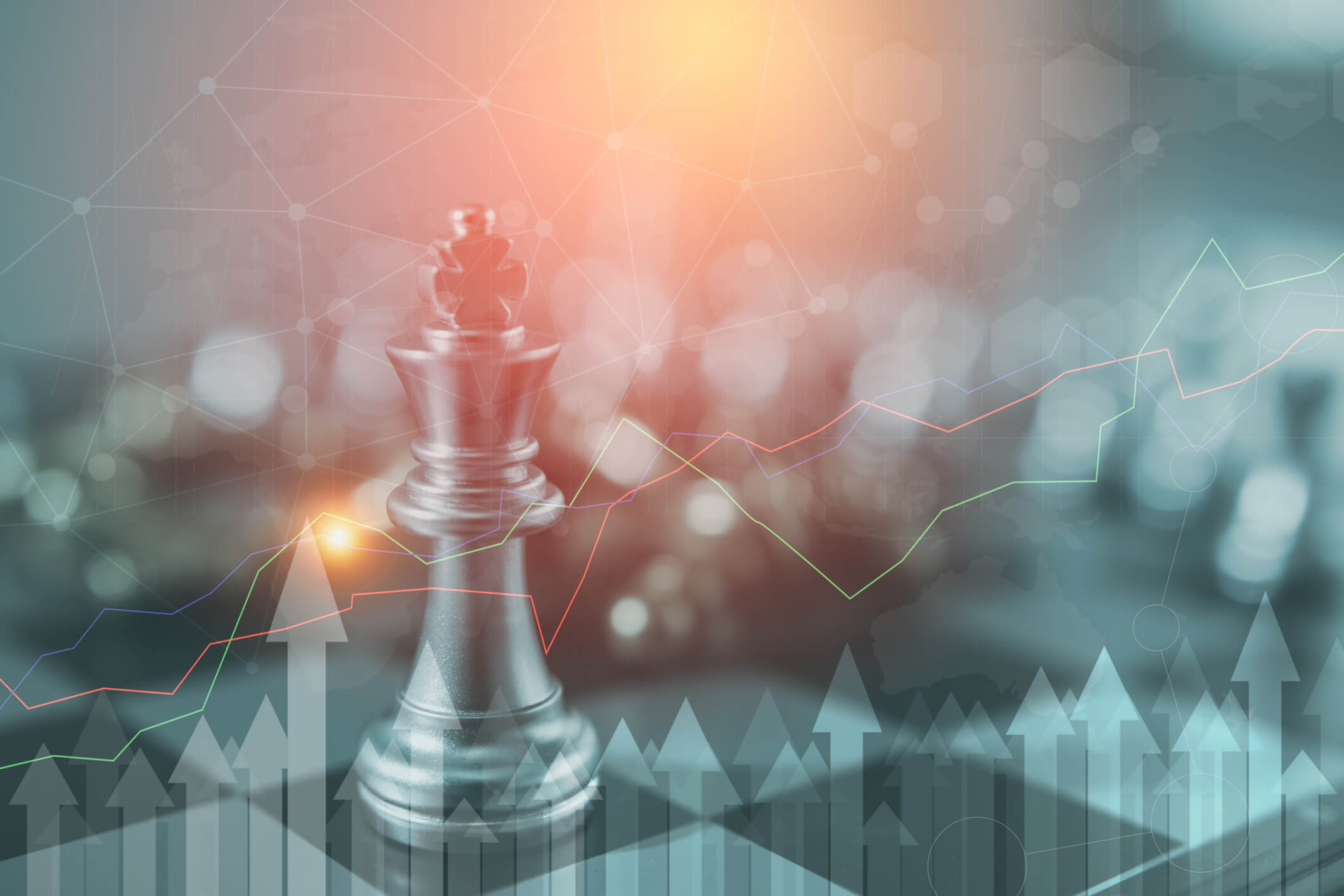Master Competitor Analysis:
Top Strategies for Success
Competitor analysis is the systematic process of identifying, evaluating, and tracking competitors’ strategies, strengths, weaknesses, and market positioning to uncover opportunities and threats that inform your business decisions. By mastering this discipline, businesses gain actionable insights to differentiate their offerings, optimize pricing, refine marketing tactics, and ultimately dominate their market.
Over 20 years as CEO of Complete Controller, I’ve witnessed firsthand how businesses transform uncertainty into strategy through rigorous competitor analysis. In fact, 61% of businesses report that competitive intelligence directly boosts revenue—a figure that’s jumped from 52% just four years ago. I’ll share the exact frameworks that helped our clients double their market share within 24 months, including the advanced strategies that 90% of Fortune 500 companies already use to maintain their edge.

What is competitor analysis and how does it drive success?
- Competitor analysis decodes rivals’ strategies to uncover gaps in the market and inform your business decisions
- It combines data collection (products, pricing, marketing) with strategic frameworks like SWOT and Porter’s Five Forces
- Businesses using it reduce blind spots by 67% and increase customer acquisition by 42%
- Companies that define clear goals and KPIs for competitor analysis are 78% more likely to see revenue growth
- It shifts focus from reactive tactics to proactive market leadership
Core Components of a Comprehensive Competitor Analysis
Understanding the essential elements of competitor analysis starts with mapping your competitive landscape accurately. Direct competitors offer similar solutions—think QuickBooks versus FreshBooks for accounting software. Indirect competitors solve the same problem differently, like spreadsheets for financial tracking. Smart businesses prioritize competitors controlling more than 5% market share or those aggressively expanding into their niche.
Product evaluation goes beyond feature checklists. Create a comparison matrix tracking feature sets, pricing elasticity, discounts, and unique value propositions. When premium brands justify higher prices through superior support or exclusive integrations, document these differentiators. Track how competitors position themselves—some emphasize cost savings while others highlight innovation or customer service excellence.
Deconstructing marketing and sales tactics
Marketing analysis reveals competitor priorities through content themes, SEO keywords, social engagement patterns, and sales funnel efficiency. High-converting assets like Shopify’s “Free Trial” CTA or underutilized channels such as LinkedIn B2B outreach provide actionable insights. Tools like SimilarWeb track traffic sources and conversion paths, exposing competitor strengths and vulnerabilities in their customer acquisition strategies.
Step-by-Step Guide to Conducting Competitor Analysis
Phase 1: Goal setting and competitor prioritization
Define SMART goals that drive specific outcomes: “Identify three pricing weaknesses in Competitor X by Q3″ beats vague objectives. Rank competitors using an Impact-Effort Matrix—high-impact rivals like market leaders demand quarterly deep dives, while low-impact targets warrant monthly monitoring. This strategic prioritization prevents analysis paralysis while focusing resources on meaningful competitive threats.
Phase 2: Multisource data collection
Combine primary and secondary research for comprehensive insights:
- Primary Research: Customer interviews reveal purchase motivations (“Why did you choose them over us?”)
- Mystery Shopping: Experience competitor sales processes firsthand
- Secondary Research: Mine earnings reports, review sites like G2 and Capterra, industry publications
- Real-time Monitoring: Deploy Kompyte or Crayon for automated competitor alerts on pricing changes and feature launches
Phase 3: SWOT and strategic group mapping
Perform granular SWOT analysis with specific metrics. Document strengths like “80% customer retention rate” or weaknesses such as “lack of mobile app cited in 60% negative reviews.” Identify opportunities in untapped markets and threats from new patent filings. Visualize positioning through Strategic Group Maps plotting competitors across meaningful axes like “Price versus Features” or “Service Level versus Market Share.”

Advanced Frameworks for Strategic Insights
Porter’s five forces: Industry-level threat assessment
This framework gauges industry attractiveness across five dimensions. Competitive rivalry intensifies with more than five equal players competing for market share. Supplier power remains low when materials are commoditized. Buyer power increases in B2C markets with minimal switching costs. New entrant threats depend on regulatory barriers and capital requirements. Substitute products pose risks when alternatives deliver similar value—think e-books versus audiobooks competing for reader attention.
VRIO analysis: Sustainable advantage scoring
Evaluate competitive resources through four lenses:
- Valuable: Does it boost revenue or customer loyalty measurably?
- Rare: Do fewer than 15% of competitors offer this capability?
- Costly to Imitate: Are patents, complex R&D, or network effects protecting it?
- Organized to Exploit: Does operational infrastructure support scaling this advantage?
Turning Data into Action: Competitive Strategy Execution
Exploiting competitor weaknesses
When rivals show vulnerability—like customer service scores dropping to 3.2/5 on Trustpilot—counter strategically. Add 24/7 live chat if they lack it. Bundle services at 20% discounts targeting their dissatisfied clients. One B2B SaaS client captured 40% of a competitor’s churned users by offering free migration services, demonstrating how operational gaps become growth opportunities.
The Netflix versus Blockbuster saga illustrates the fatal cost of ignoring competitor innovations. Blockbuster dismissed Netflix’s mail-in DVD model and streaming technology, rejecting a $50 million acquisition offer in 2000. By 2010, Blockbuster filed bankruptcy while Netflix grew to 269.6 million subscribers by exploiting market gaps like eliminating late fees and embracing technology shifts.
Anticipating moves with early-signal tracking
Monitor job postings revealing expansion plans—”German Market Manager” signals international growth. Beta-test leaks expose feature updates before launch. Supplier relationship changes indicate cost restructuring initiatives. Set Google Alerts for patent filings, funding rounds, and executive movements to stay ahead of competitor pivots.
Essential Tools for Modern Competitor Analysis
AI-Powered Platforms
Modern competitive intelligence demands sophisticated automation. Businesses using AI for competitor analysis reduce customer acquisition costs by up to 50% and identify market opportunities 4x faster than manual methods.
- Kompyte: Tracks real-time website changes and auto-generates battle cards comparing feature sets
- Crayon: Detects pricing anomalies through AI-driven anomaly detection
- Klue: Synthesizes thousands of reviews into sentiment-tagged themes (“Billing complaints: 32%”)
SEO and content analysis stack
- Semrush Keyword Gap: Uncovers untapped keywords by comparing domain rankings
- Ahrefs Content Explorer: Identifies top-performing competitor content by social shares
- HubSpot SEO Tool: Audits backlink profiles revealing link-building opportunities
Avoiding Common Pitfalls in Competitive Analysis
Surface metrics mislead without context. A competitor’s traffic drop might stem from algorithm penalties rather than strategic failures. Sales enablement platform Highspot exemplifies proper analysis—they used win-loss interviews discovering competitors’ complex onboarding weaknesses. By redesigning their customer journey addressing these gaps, they increased conversion rates by 18% and reduced churn significantly.
Final Thoughts
After two decades helping businesses navigate complex financial landscapes, I’ve learned that competitor analysis transforms from task to strategic discipline when done right. The frameworks outlined here—from SWOT analysis to AI-powered monitoring—provide the foundation for market domination. Success comes from consistent application, turning insights into action, and staying ahead of market shifts. Ready to implement these strategies with expert guidance? Connect with our team at Complete Controller to accelerate your competitive advantage.

Frequently Asked Questions About Competitor Analysis
What is the main purpose of competitor analysis?
The main purpose is understanding competitors’ strategies to identify market opportunities, anticipate threats, and make informed decisions that create sustainable competitive advantages for your business.
How often should I conduct competitor analysis?
Treat it as an ongoing discipline with comprehensive quarterly reviews and continuous monitoring of key competitors through automated tools tracking pricing, features, and market movements.
What are the most common mistakes in competitor analysis?
Common mistakes include focusing only on direct competitors, relying on outdated data, surface-level metric tracking, and failing to convert insights into actionable strategic initiatives.
Can small businesses benefit from competitor analysis?
Absolutely. Small businesses use competitive intelligence to find underserved niches, compete effectively against larger players, and avoid costly head-to-head battles with industry giants.
What tools are essential for competitor analysis?
Essential tools include AI platforms like Kompyte for real-time monitoring, SEO tools like Semrush for content analysis, and social listening tools for tracking sentiment and market trends.
Sources
- AI Contentfy. “Key Steps to Conducting a Competitive Analysis Based on Search Intent.” AI Contentfy Blog, 6 Nov. 2023, https://aicontentfy.com/en/blog/key-steps-to-conducting-competitive-analysis-based-on-search-intent
- Corporate Visions. “Win-Loss Analysis for Competitive Intelligence.” Corporate Visions Blog, November 21, 2024, https://corporatevisions.com/blog/win-loss-analysis-competitive-intelligence/
- Crayon. “61% of Businesses Say Competitive Intel Boosts Revenue.” Crayon Blog, March 18, 2021, https://www.crayon.co/blog/new-data-competitive-intelligence-increases-revenue
- Evalueserve. “Competitive Intelligence: 19 Statistics to Blow Your Mind.” Evalueserve Blog, July 31, 2024, https://www.evalueserve.com/blog/competitive-intelligence-statistics/
- HubSpot. “What Is a Competitive Analysis — and How Do You Conduct One?” HubSpot Blog, 11 Apr. 2025, https://blog.hubspot.com/marketing/competitive-analysis-kit
- Investopedia. “Netflix vs. Blockbuster: Strategy, Tech, and Market Dominance.” Investopedia, June 3, 2025, https://www.investopedia.com/netflix-stock-get-bullish-price-target-from-jefferies-update-11747157
- Kompyte. “8 Totally Relatable Examples of Competitive Intelligence.” Kompyte Blog, December 13, 2023, https://www.kompyte.com/blog/competitive-intelligence-examples/
- Miro. “Competitive Analysis Examples: Tools & Tips to Strategize Smarter.” Miro Blog, 29 Jan. 2024, https://miro.com/strategic-planning/competitive-analysis-examples/
- Octopus Intelligence. “Case Study on Unleashing the Power of Competitor Analysis.” Octopus Intelligence, 22 May 2023, https://www.octopusintelligence.com/case-study-on-unleashing-the-power-of-competitor-analysis-by-gaining-the-strategic-edge/
- Octopus Intelligence. “Avoiding Mistakes in Competitive Analysis.” Octopus Intelligence, 31 Jan. 2025, https://www.octopusintelligence.com/avoiding-mistakes-in-competitive-analysis-what-mistakes-did-you-make-last-time/
- Similarweb. “7 Types of Competitor Analysis Frameworks.” Similarweb Blog, 16 Nov. 2021, https://www.similarweb.com/blog/research/market-research/competitor-analysis-frameworks/
- Slideworks. “How To Do Competitive Analysis (6-Step Framework and Template).” Slideworks, 24 Feb. 2025, https://slideworks.io/resources/competitive-analysis-framework-and-template
- Sprout Social. “15 Competitor Analysis Tools to Keep Tabs on Your Competition.” Sprout Social Insights, 22 Nov. 2024, https://sproutsocial.com/insights/competitor-analysis-tools/
- Symanto. “Competitor SWOT Analysis: How To Gather Data and What To Do With It.” Symanto Blog, 9 Nov. 2022, https://www.symanto.com/blog/competitor-swot-analysis-how-to-gather-data-and-what-to-do-with-it/
- Traffic Think Tank. “7 Step Guide to SEO Competitor Analysis.” Traffic Think Tank, 26 Mar. 2025, https://trafficthinktank.com/seo-competitor-analysis/
 About Complete Controller® – America’s Bookkeeping Experts Complete Controller is the Nation’s Leader in virtual bookkeeping, providing service to businesses and households alike. Utilizing Complete Controller’s technology, clients gain access to a cloud platform where their QuickBooks™️ file, critical financial documents, and back-office tools are hosted in an efficient SSO environment. Complete Controller’s team of certified US-based accounting professionals provide bookkeeping, record storage, performance reporting, and controller services including training, cash-flow management, budgeting and forecasting, process and controls advisement, and bill-pay. With flat-rate service plans, Complete Controller is the most cost-effective expert accounting solution for business, family-office, trusts, and households of any size or complexity.
About Complete Controller® – America’s Bookkeeping Experts Complete Controller is the Nation’s Leader in virtual bookkeeping, providing service to businesses and households alike. Utilizing Complete Controller’s technology, clients gain access to a cloud platform where their QuickBooks™️ file, critical financial documents, and back-office tools are hosted in an efficient SSO environment. Complete Controller’s team of certified US-based accounting professionals provide bookkeeping, record storage, performance reporting, and controller services including training, cash-flow management, budgeting and forecasting, process and controls advisement, and bill-pay. With flat-rate service plans, Complete Controller is the most cost-effective expert accounting solution for business, family-office, trusts, and households of any size or complexity.
 Reviewed By:
Reviewed By:




